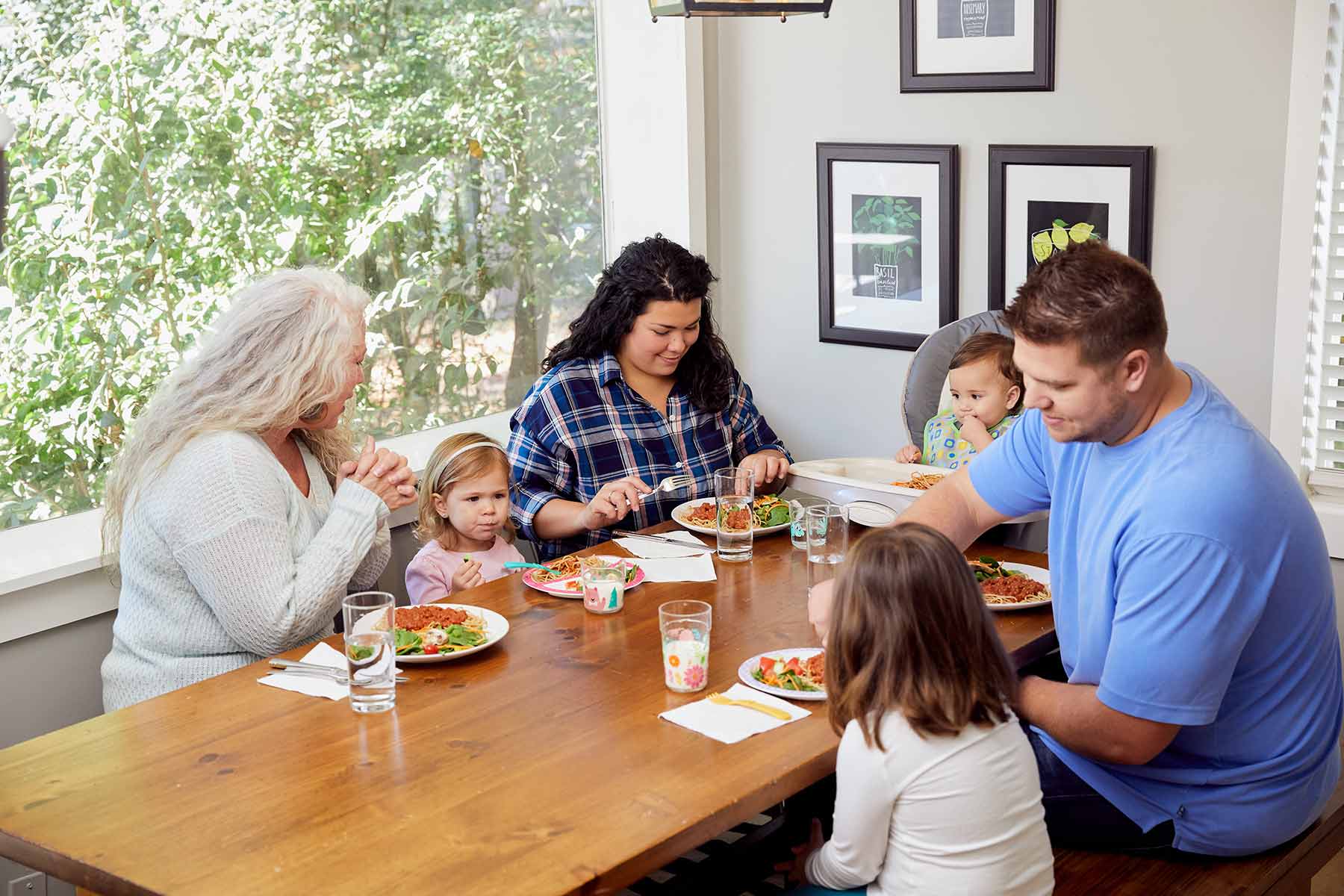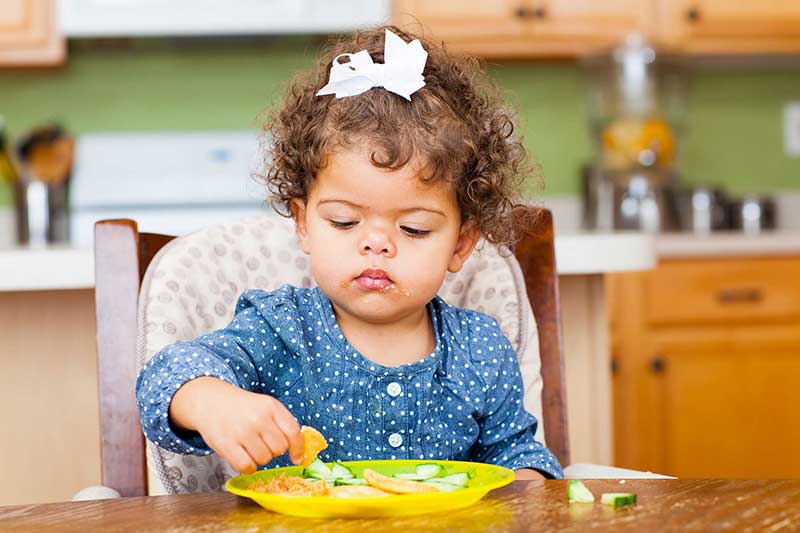Teaching Your Toddler to Eat Like a Big Kid
By this age, your toddler has started to feed themself. This is a good and healthy step. In fact, by helping your child with the right types of kids’ utensils at this crucial time, you’ll help them develop the fine motor skills and coordination they need to keep mastering new skills down the road, such as brushing their teeth, buttoning their pants and writing. Set your child up for success with these tips.
In this article:
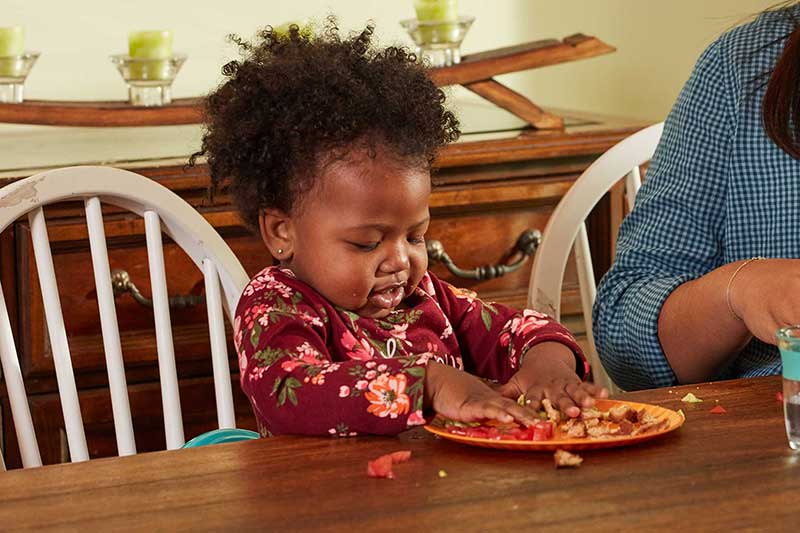
Practicing eating like a big kid
When it comes to helping your toddler learn how to feed themself, practice (and more patience) makes perfect. The first time you offer your toddler a baby spoon, they might not be ready for it. Let them keep eating bite-sized pieces with their hands or start using their hands and a utensil until they're interested in using just their fork and spoon.
Other tips when your toddler is learning how to feed themself include:
- Let your child play with and explore their food.
- When your child throws food on the floor, gently encourage them to play with it on their tray or plate instead.
- Put newspaper, an old sheet or an old towel under your child's chair, or put their chair on an easy-to-clean surface.
- Expose your toddler to lots of different textures.
Expect a mess, and remember that it will get better. In time, your toddler master feeding themself (under your watchful eye), which will make them feel “grown up” while still getting well-balanced, nutritious meals that help them grow strong.
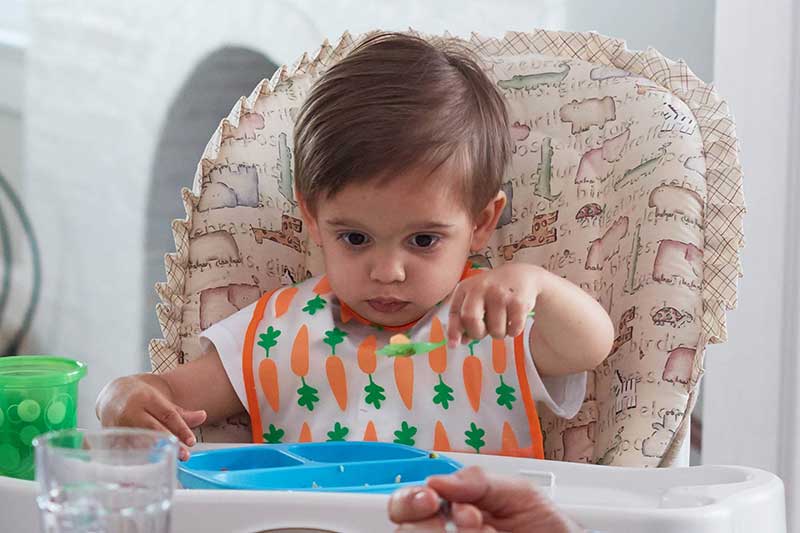
Choosing the right tools
The right tools can make all the difference in helping your toddler enjoy using forks and spoons to eat bite-sized pieces of all the new, healthy foods you’re introducing. In general, look for utensils, bowls, plates and cups that fit your child's hands. Divided plates—or separate bowls—give them more places to ‘scoop’ the food into their spoon, which helps them learn and grow.
Experiment to find the right self-feeding tools for your child, and don’t feel pressured into buying the latest and greatest (and most expensive) items at the store. Just stick to the basics. Some kids prefer cups with handles, while others do better without them. If one isn’t working, try the other. This goes for plates, bowls and utensils too; keep trying until you find the one that works best for your little one.
If your child seems uninterested in graduating to big-kid plates and cups, get them excited about it by letting them pick items with their favorite color or character on them.
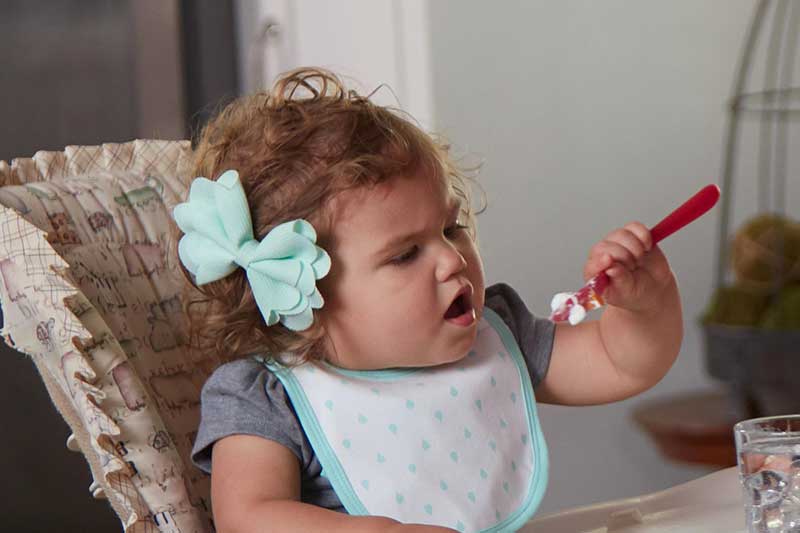
Getting the food ready
Not surprisingly, throwing a chicken breast on a plate and giving your 15-month-old a fork and knife to eat it isn’t going to end well. You can help your toddler gain confidence and satisfaction in feeding themself by cutting up their food into bite-sized pieces that are small enough to prevent choking but big enough to stab with a small fork or scoop with a toddler-sized spoon.
Speaking of spoons, foods that stick easily to spoons, such as yogurt, cottage cheese, applesauce, oatmeal and sweet potatoes, are great for boosting confidence.
If your child is still gagging or choking often, or has trouble chewing and moving food around in their mouth, talk to their doctor.
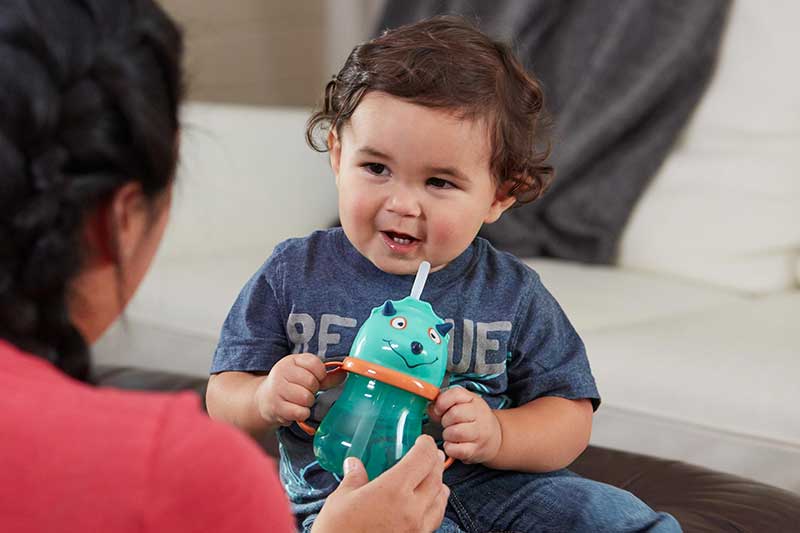
Preparing for cups
Giving your toddler a cup—uncovered or a straw sippy cup—can be a scary time for a parent. What will happen to the carpet, couch or clothes? Reduce your stress by introducing this new tool only with water because as your toddler learns to hold a cup and drink through it, they will probably drop it a lot.
Another great way to minimize the mess during this learning stage is to pick one meal to use an open cup, and use a cup and straw for other meals. When you’re on the go, grab a sippy cup with a straw or a child-sized water bottle with an open mouthpiece.
